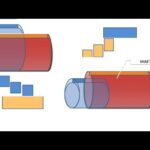PTFE is an abbreviation of Poly-Tetra-Fluoro- Ethylene and a white polymer with outstanding properties. The structure of molecules is round and looks like balls one over the other.
Properties of PTFE
PTFE has the lowest coefficient of friction of all solid materials ever known and does not show “Stick Slip” behaviour because the static and dynamic friction coefficients are equally low.
The thermal stability of PTFE is extremely good and is not at all affected even at 320 and extreme circumstances as PTFE is inert and does not react with any chemical. For this reason, PTFE is used in high performance greases and lubricants whereas normal lubricating oils resist temperatures only up to 170°C.
How Does PTFE additive work in Engine Oils?
Since 3 decades, PTFE Oil additives were introduced by various companies but because of wrong approach, they could not live up to their claims which created an adverse effect on the scientific community and the consumers. These PTFE additives in lubricating oils were marketed “a one time treatment to engines to reduce wear, friction, fuel consumption”…etc. Such claims were not true because no additives work for life long but the frequency of oil change of the engine can be extended considerably. Secondly, the two prime factors for these products not achieved success are the instability of PTFE dispersions in making the oil additive and need of understanding the mechanisms theoretically and practical as well.
Engines, when started in the morning — whether it is an automobile or industrial machinery — is called “cold start”. Now during cold start, the engine or machinery is without lubrication and there will be metal to metal friction with start up of the engine and heavy load due to which the wear and friction rate is high. This is because when the engine is stopped previous day, the lubricating oil flows back to the crankcase and upon restarting and consequent accelerated engine while driving, the metal surfaces coming in contact lack lubrication between them. As stated above, the PTFE molecules are shaped like balls and when the engine/machine is treated with PTFE additive, it gets embedded into the minute pores of the incumbent metal. The PTFE acts as a thin layer of self-lubricating surface which contributes towards longer life of the machine due to the resultant decrease of wear and tear.
The minute particles of PTFE (which is popularly called by “Teflon”, a registered trademark of Du Pont), when suspended in lube oil, acts as roller bearings between the two metal contacts and the tests have proved that there is “no metal contact” with start up and heavy load thereby eliminating wear and giving easy uninterrupted friction-free movement of the engines.
Benefits and advantages of PTFE Oil Additives in Engines
Due to the advancement in technology, high power engines are in use but common engine oils in the market cannot provide what PTFE Oil additives can. At temperatures of 150 C and beyond the viscosity of oil comes to very low level and there is a reduction in lubrication which results in increased friction and wear.
There is as that apprehension that oil additive may dilute engine oil which is not true. PTFE oil additive to be added to lubricating oil is not more than 10% of the quantity of engine oil and such small quantity does not affect the properties of the lubricating oil.
PTFE molecules in Oil additive are super micro fined and easily pass through the oil filters and channels. In addition, the PTFE molecules do not tend to clog or coagulate even if the temperature rises beyond 300° C
PTFE oil additive can stabilize in all type of mineral, semi synthetic and synthetic oils recommended for engines and machines.
PTFE when added to lube oil minimize noxious emissions as the molecules are active in very low concentrations and tests have proved that PTFE molecules do not decompose in the engine during combustion as the residence time is very short.
A good PTFE oil additive can save fuel by 4 to 8% although the savings are indirect since the additive is not directly added in the fuel. The indirect saving is seen because of reduction of internal friction in the engine and leakage along piston rings. Here the temperature of the piston rings reach beyond 230° C as a reason of which there will be insufficient lubrication with normal lube oils. Also, “Stick-Slip” is caused due to the addition of vibration of the piston rings in the grove to poor lubrication. The problem of “Stick-slip” does not allow the piston rings from following the cylinder wall smoothly due to which there will be leakage and loss of compression. PTFE reduces “Stick-Slip” significantly making the piston rings to follow the cylinder walls easily.
Conclusion:
1. Using PTFE, wear and friction can be reduced up to 60%
2. Increased engine life to 2 times
3. Increased life of the lube oil as the viscosity of the oil is maintained and carbonising of the oil is reduced to great extent which will allow the consumer to use the oil to extended level and then go for change.
4. Compression is maintained without losses.


